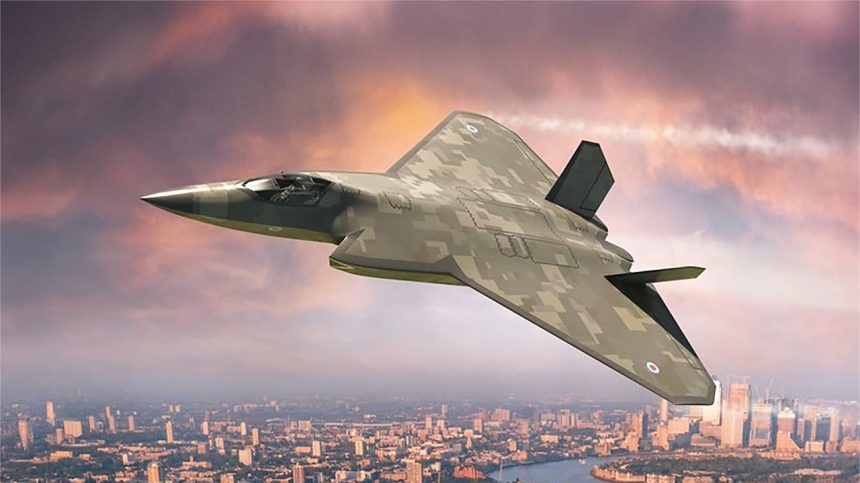Parts from former Royal Air Force Tornado GR4 aircraft have been ground down and converted into 3D printable material for use in the United Kingdom’s sixth generation Tempest manned fighter jet.
The program aims to save money on purchasing costs from abroad and help to make the British aviation industry more self-reliant which is becoming more relevant as global supply chains become threatened. Moreover, according to the Ministry of Defence (MOD) self reliance will allow the UK to manufacture components for aircraft that would be “higher quality” than those that would be imported in. This move helps to boost the UK’s defence industry and is a formal part of the British government’s “Plan for Change”.
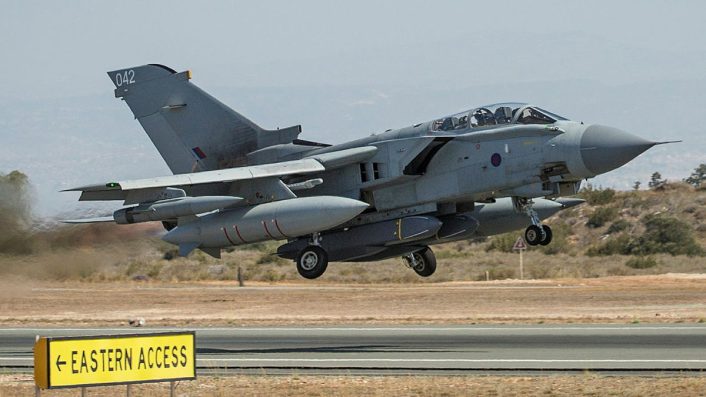
The UK MOD still has a supply of surplus equipment containing large amounts of high quality steel, aluminum, and titanium that would normally be sourced from outside of the UK. The ‘Tornado 2 Tempest’ team have been working to identify whether these components could be atomised into powder, described by the project as “feedstock”, which could then be converted into 3D printable material to be used in components for new aircraft.
Tornado 2 Tempest is an exciting collaboration that unlocks new opportunities in circular economy practices & supply chain resilience to deliver a more sustainable future for aerospace & defence. Discover more: https://t.co/4Q5VBMElbl#RollsRoyce #Sustainability pic.twitter.com/RGt4lszfpk
— Rolls-Royce (@RollsRoyce) February 5, 2025
In the latest test, Tornado jet engine compressor blades which contain titanium, were cleaned, atomised and recycled into a nose cone and new compressor blades for Orpheus – Rolls-Royce’s small engine concept that is part of the Future Combat Air System (FCAS) programme. The nose cone was fitted onto one of these engines and then was tested for its suitability and safety, which it passed.
This process has lots of potential to change how the UK manages its supply chain. It could allow for aircraft production to become more sustainable, benefiting the environment. But it could also increase the UK’s resilience to shocks emanating from abroad, which is vital considering the world’s heightened state of tension.
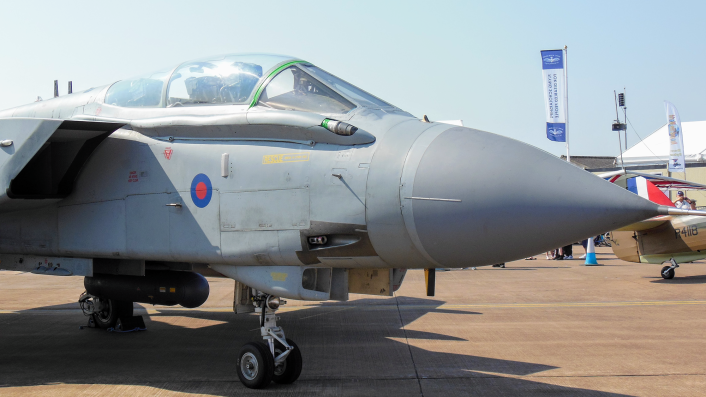
The program is led by Defence Equipment and Support’s (DE&S) Defence Recycling & Disposals Team (DRDT) in partnership with the FCAS team, Rolls-Royce and Additive Manufacturing Solutions Limited (AMS) who handled the 3D printing of the new parts.
The UK’s Minister for Defence Procurement and Industry, Maria Eagle stated that:
“The Tornado 2 Tempest project highlights the creativity, ingenuity and innovation defence employs in our approach to national security.
By working with key industry partners, we can deliver savings, reduce reliance on global supply chains and ensure our Armed Forces have the very best kit to keep our country safe.”
Known as ‘Tornado 2 Tempest’, the initiative grinds down surplus Tornado parts into a powdered metal feedstock used in 3D printing, creating new components for the Tempest programme.https://t.co/LILmFW21AT
— UK Defence Journal (@UKDefJournal) February 7, 2025
This was reinforced by comments from FCAS’ Sustainability Requirements Manager Squadron Leader Rob, who said that:
“Through the expected lifecycle of the UK’s FCAS, we expect access to critical materials to be challenged, as global supply chains become increasingly disrupted and competitive. In parallel, there is a societal need to make the best use of the raw materials we already have.”
Tempest Progress
Tempest aims to become the UK’s sixth generation fighter aircraft aiming to replace the Eurofighter Typhoon in British service from 2035. The programme officially called the Global Combat Air Program (GCAP) is multinational with the UK partnering with the Italian and Japanese governments and their defence firms to produce a globally effective aircraft that can fulfil the requirements for all three countries. GCAP merged the original British and Italian Tempest programme, with the Japanese F-X programme in order to save on development costs for all three nations.

The manned fighter is a part of the FCAS programme that also aims to develop multiple extra capabilities that will form the ‘system of systems’ that Tempest will use to dominate the future battlespace. These include unmanned aerial vehicles (UAV), directed energy weapons, an augmented reality cockpit, artificial intelligence (AI) and biometric monitoring.
Much of this is still in its concept phase, but due to the nature of emerging technologies it is likely that development will speed up over time. It is currently planned that a demonstration aircraft will take its first flight in 2027.
GCAP saw some large milestones in 2024, with the year seeing the start of the building process on Tempest’s demonstrator aircraft. For the powerplant the MOD donated two EJ200 Rolls Royce engines which are set to be installed onto the aircraft and used during the flight testing phase. The Orpheus engine, currently under development, which was the recipient of the former Tornado parts, is currently being used to test technologies that are likely to feature in the next generation of aircraft engines that would replace the EJ200.
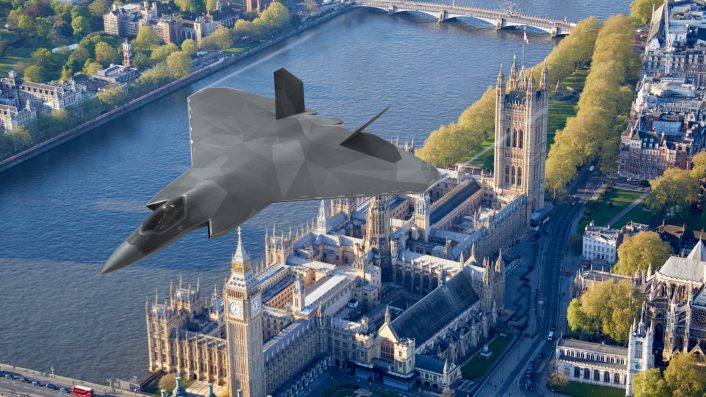
As well as this, in July of last year a new concept model of the Tempest was revealed to the public at the Farnborough air show. They showed it in a variety of aircraft liveries representing what Tempest could look like in international service.
Unveiled at the Farnborough International Airshow 2024, the latest GCAP model has wider wings, claimed to be the most advanced future fighter aircraft in the worldhttps://t.co/1YFYx3fPEo pic.twitter.com/nGeUhew0QY
— Roni Sontani (@Roni_Sont) July 22, 2024
Towards the end of the year it was also revealed that the Boeing 757 ‘Excalibur’ test aircraft had completed its maiden flight. The converted airliner will be used to test and develop technologies intended for use in FCAS which includes the next generation radar that is intended to be used in Tempest. At some point in the future Excalibur will be updated with a fighter radome on the nose to house the test radar, much like what was seen on board Qinetiq’s Avro RJ100 test aircraft.
.@Boeing 757 ‘Excalibur’ testbed converted from passenger use, will be used to develop technologies for the UK Future Combat Air System program, of which the Global Combat Air Programme fighter is a major part. @BoeingAirplanes @TheAviationist @Leonardo_UK https://t.co/Z6d0IDhhYZ
— Adam ✈️ (@FlyinAdamBadger) December 15, 2024
Tornado Repurposed
For forty years the Panavia Tornado was the RAF’s primary frontline strike aircraft, seeing service across the world and participating in numerous conflicts right up until its retirement in 2019. Retired aircraft have previously been scrapped by the British government with a few examples surviving in national museums or living on as maintenance training aids at RAF Cosford.
Did you know that RAF Cosford has six Tornado GR4s, two GR1s and one F3 as well as GR1 and F2 cockpits that are used to deliver training to our apprentice aircraft technicians? #TonkaTuesday pic.twitter.com/VyOZJB19Kb
— RAF Cosford (@RAF_Cosford) March 16, 2021
Recycling these aircraft into new parts to be continually used in the British defence industry is an ingenious way of reducing waste, reducing cost and keeping the memory of the Tornado and its aircrew alive as they become a part of the RAF’s next chapter. However, this is not the only form in which Tornado GR4 has been able to provide for other aircraft.
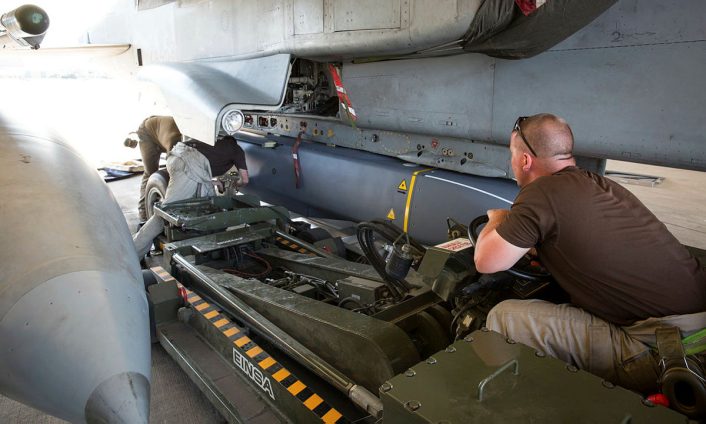
In May 2023 the United Kingdom announced that it was supplying Storm Shadow cruise missiles to Ukraine to allow them to strike at targets hundreds of kilometres behind Russian lines. In order to facilitate this use, technical specialists from the Anglo-French company MBDA Missile Systems mounted Tornado underbelly pylons, such as the ones in the above photograph, to the wing pylons of Ukrainian Su-24 fighter bombers. This gave them the ability to carry and launch the Storm Shadow missile taking the place of what would usually be extra fuel tanks.
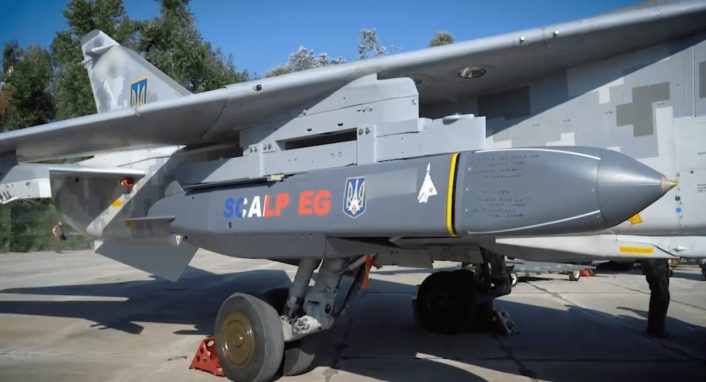
This outside of the box thinking has allowed the Ukrainians to utilise British and French cruise missile stocks in their fight against Russia until the arrival of purpose built aircraft to their air force.
The Mirage 2000-5 supplied by France in January 2025 is rumoured to be able to launch Storm Shadow and SCALP-EG, the French variant of Storm Shadow. French Defence Minister Sébastien Lecornu previously stated that Mirages destined for Ukraine would be upgraded with a significant air to ground capability indicating that the former air to air fighters had now been repurposed for Ukraines needs. Mirage 2000-5s used by the United Arab Emirates are able to launch SCALP-EG missiles, so it is highly likely that variants sent to Ukraine will complement Su-24 bombers in this role.
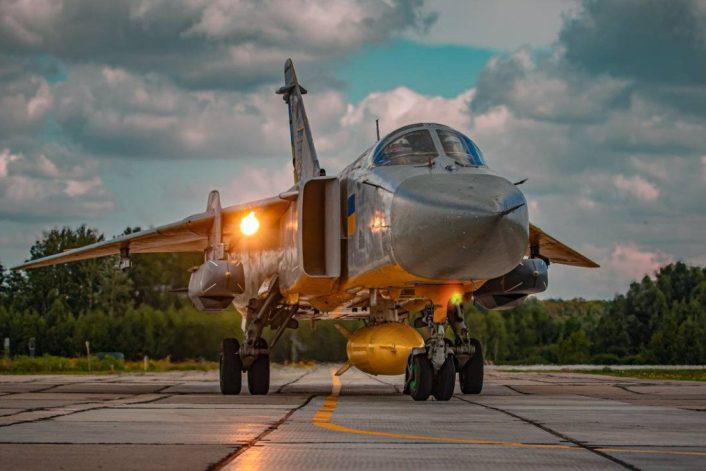
The recycling of Tornado GR4 aircraft for other purposes allows the UK to get ever more use out of the fighter bomber that was once the tip of the spear for RAF combat air.

